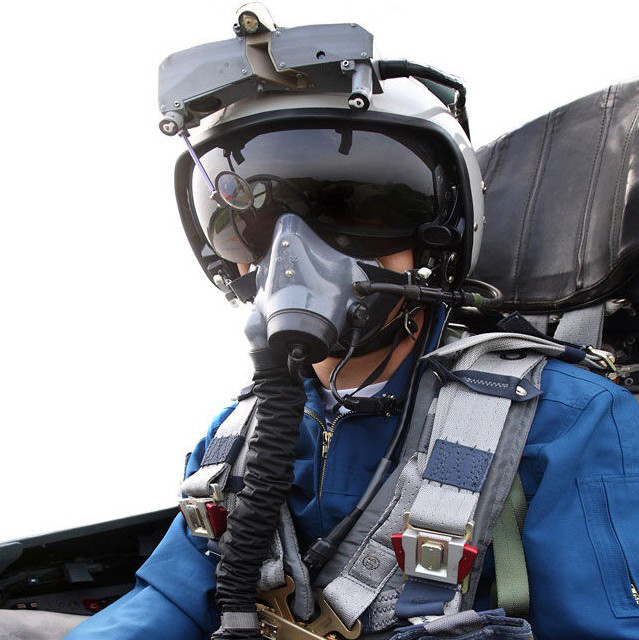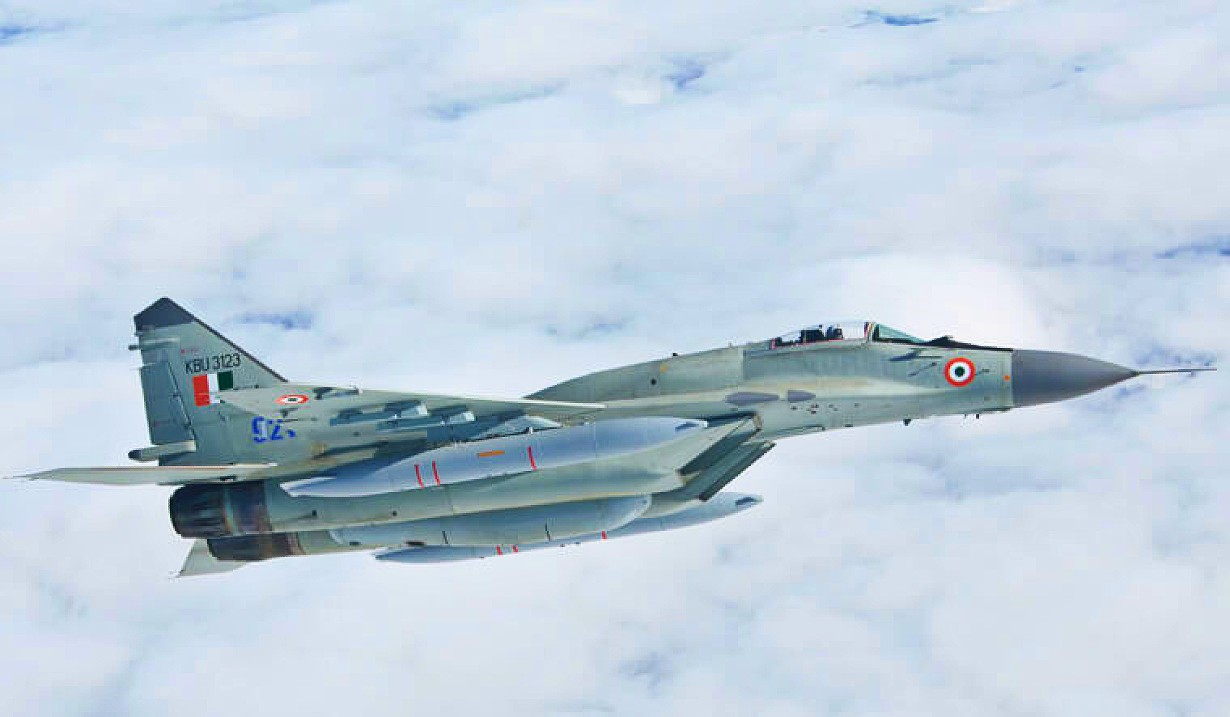In what serves as a testament to the advancement and far-sightedness of Soviet and Russian aerospace sciences, Israeli Air Force (IAF) pilots have overwhelmingly praised the MiG-29 Fulcrum, which they extensively tested in a secret program in the mid-1990s.
Facing Syrian and Iranian MiG-29s, a significant “strategic threat” to Israel, the IAF developed tactics to beat the Fulcrum by flying it against their F-16s and F-15s. The US-origin jets have been described as “delicate” before the “robust,” “reliable,” and “simple” Soviet aircraft.
Following the breakup of the Union of Soviet Socialists Republics (USSR or the Soviet Union), the MiG-29 was obtained by the United States Air Force (USAF). Serving with many Warsaw Pact countries like Poland and nations part of the USSR like Ukraine, the USAF extensively used the legendary and highly capable jet for ‘dissimilar’ air combat training for its pilots.
The MiG-29 still serves in dozens of air forces worldwide, including India, in its Cold War-era configurations and the latest variants with 21st-century electronics and radars.
However, the war in Ukraine has seen only the Ukrainian Air Force use its MiG-29s, many of which have been shot down, while the Russians have heavily relied on its Su-35S, Su-30SM-2, and MiG-35 fighters.
No publicity material from the Russian Ministry of Defense (RuMoD) has mentioned the employment of the MiG-29 or its latest variant, the MiG-35.
Soviet Union’s Top Fighter, The AK-47 Of The Skies
A report in The War Zone quotes multiple IAF pilots and senior officers on their experience with the jet, who noted more positives than drawbacks.
As for the origin of the MiG-29s and the base they were used on, the report concludes these to be Polish MiG-29s and possibly trained on them at their Flight Test Center (FTC) based at Tel Nof, south of Tel Aviv in central Israel.
Maneuverability, higher engine thrust-to-weight ratio, a highly capable radar, futuristic features like integration of radar and sensors, and a high degree of flight control automation were some attributes that blew away Israeli pilots. Multiple simulated dog fights and air combat drills were held with a pre-flight briefing and post-flight debriefing, sometimes lasting more than six hours.
Interestingly, even the United States acquired MiG-29s after the dissolution of the USSR, first training on Russian Fulcrums themselves in 1997 by sending its pilots on a goodwill visit.
A Russian defector, a MiG-29 pilot, Alexander Zuyev, also managed to switch sides with the US in 1989 by landing his plane in Turkey.
While Zuyev could not bring his plane to the US, he however immensely helped the US military in unlocking the full capabilities of the MiG-29 and Soviet Air Force procedures and tactics.
Notably, the MiG-29 was the most capable and feared Russian aircraft as its frontline fighter at the time, generating considerable worry among Western air forces.
Sensor Fusion & Helmet Mounted Display In The 1980s
The report quoted a Major, identified as N, who warned how Israeli should not underestimate the highly maneuverable jet with a high thrust-to-weight ratio, especially if a well-trained pilot flies it. A Lt Gen M noted the Fulcrum’s core kinematic advantage being in a “tight turning battle” as its “close maneuvering engagements (are) terrific.”
The Israelis also had high regard for its N019 pulse-doppler radar (NATO code name ‘Slot Back’), but it lacked in a few respects with Western airborne radars of the time.
The infrared search and track (IRST), a camera-like sensor that juts from the right outside the cockpit, was one incredibly rare and pioneering feature. Maj N. admired the radar, the IRST, and particularly the Russian helmet, which, although less convenient than an Israeli system, had “high off-boresight cuing capability for its Archer missiles,” which he exploited.
The MiG-29’s defining feature was the Shchel-3UM helmet-mounted sight, which slaved the OLS-29 IRST to its laser and the infra-red heat-seeking R-73 short-range missile to the pilot’s head movement. This ‘look at shoot’ ability practically made the Shchel the world’s first helmet-mounted display – one of the features a jet requires to be qualified for Generation 4.5 and above today.

HMDs beam the cockpit screen displays directly on the visor, allowing the pilot to look around freely and better balance the load of flying and combat. The latest HMDs have gone beyond, with advanced sensors that track eye movement, shift the reticule accordingly, and cue the missile to the target.
Lt Gen G. added, “I was positively surprised by its systems. The different parts — radar, helmet-mounted display, and missiles — are very well combined. The jet is equipped with advanced air-to-air guided missiles and radar-guided missiles.
The jet features an IRST system, which identifies targets by their heat signature without using radar. Combined on a relatively good platform, all these result in an advanced weapons system. The MiG turned out to be an advanced fighter jet, similar to the F-15 and F-16.”
G.’s stress on the “combination” of the radar, HMD, and the missiles is a description of a primitive form of sensor fusion, which is today’s buzzword in air combat computing. Only the F-35 and possibly the Chinese J-20 boast incredible niche technology.

MiG-29 Could Land & Control Itself!
The report adds, “A passive IRST sensor was still very much a novelty and was found on only a few Western fighters of that era, while it was a standard feature on Russian-made fighters. Other features that won the praise of the Israeli pilots included its level of automation, which took certain critical parts of flying out of the pilot’s hands, allowing them to concentrate on other elements of the mission.”
In particular, it was the ability to land by itself, without the need for the pilot’s involvement. Maj N. said, “The landing destination is entered into the computer before takeoff. In case of bad weather or any other difficulty, hampering the pilot’s ability to land, he needs to press a button, and the jet will land by itself.”
Another revolutionary system was the ability of the jet to stabilize itself in case the pilot is incapacitated owing to motion sickness or disorientation, possibly after pulling high Gs. “Such systems do not exist in Western aircraft, counting on the pilot to handle such situations independently,” Maj N. continued.
These systems began becoming commonplace with advanced flight control computers and digital fly-by-wire systems by the late 1990s and have matured and refined themselves only after the 2000s.
The only areas wanting were ergonomics and poor human-machine interface, often the victims of the typical Russian emphasis on ruggedness and durability.
Other problems Israeli pilots faced were language barriers, with the written materials and pre-recorded voice warning systems being in Russian. But that still was tolerable, as the “important things were proper and simple,” according to Maj H.
“The engine start, for example, is done with a single push of a button, following which there are only a few tests the pilot needs to perform.”
- The author can be reached at satamp@gmail.com
- Follow EurAsian Times on Google News





